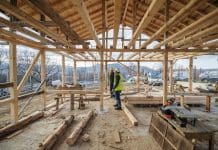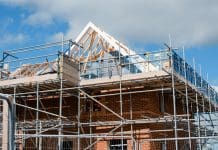With more and more new build developments cropping up all over the UK, and funding initiatives to make home ownership more affordable, the option of buying a new build home is becoming increasingly popular. So how does buying a new build home compare with a traditional home purchase?
With more and more new build developments cropping up all over the UK, and funding initiatives to make home ownership more affordable, the option of buying a new build home is becoming increasingly popular.
So how does buying a new build home compare with a traditional home purchase?
Structural warranty cover
Firstly, new homes are covered by what is known in the construction industry as a structural warranty. A structural warranty is purchased by the developer before commencing construction onsite. Although the warranty is bought by the developer it actually protects you, the homeowner from structural damage that may occur during the first ten years after your home is built.
Most new home warranties are valid for 10 years and consist of two key periods of insurance:
- Defects insurance period
- Structural insurance period
The defects insurance period typically refers to the first one or two years of the structural warranty. During this period the developer is responsible for rectifying any failures to comply with their technical standards. If you notice any faults during this time you would need to report them directly to your developer.
The structural insurance period usually takes effect after the first two years and will provide cover against any structural damage to your property. Any issues that are identified during this time would need to be flagged up to your warranty provider as they would now be responsible for resolving any defects.
It is important to note that a structural warranty is not the same as standard home insurance which is typically made up of building and contents insurance. Buildings insurance is usually a minimum requirement of any mortgage agreement and provides cover for damage to the property including fixtures and fittings like the kitchen and bathrooms. Contents insurance on the other hand is optional but can usually be combined with your buildings insurance to provide cover for loss or damage to personal belongings such as your TV, sofas and other valuable items.
When purchasing a new property you will be asked by your developer to undertake a handover inspection of the property. This involves identifying what is known as a “snagging list” of things that are not quite right with the property before you officially take over ownership of the property.
It is essential to report any damage such as marks, chips, scuffs, scratches and staining at this stage, for your developer to put right, as such damage is not covered by your warranty.
Running in your new home
Another thing you may not have considered when buying a new build home is that your home will need to get used to being lived in as much as you will need to get used to living in your new home.
This is because many of the materials used in building a house are mixed using water, such as plaster, concrete and mortar. This means that water will evaporate from these materials and may cause condensation in your home.
Excess condensation can cause peeling wallpaper, crumbling plaster, discolouration and even health issues, such as the growth of mould on walls and ceilings, or dust mites but these issues can be avoided by controlling moisture levels.
As your home is lived in and heated, the timber and plaster used to build your home will shrink which may cause small cracks to appear. These cracks are not a sign of subsidence or structural defects and can be minimised and repaired.
















